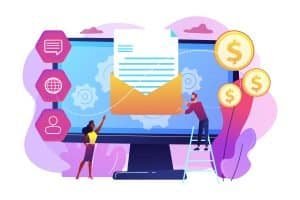Hey there, fellow netizen! 1 Are you feeling jittery about sending that important email? Are you worried about hackers snooping around in your inbox? Well, fret not because I’ve got your back! Let’s delve into some top-notch email security practices that will keep your digital correspondence safe and sound in 2024.
1 Embrace the Power of Encryption
Imagine your email is a treasure chest filled with precious gems of information. Would you leave that chest wide open for anyone to peek inside? Of course not! That’s where encryption comes in. Encrypting your emails is like locking that treasure chest with a sturdy padlock, ensuring that only the intended recipient can unlock and access its contents. So, before hitting that send button, enable encryption for an extra layer of security.
2 Choose Strong and Unique Passwords
Ah, passwords – the unsung heroes of online security. But here’s the thing: “password123” won’t cut it anymore. In this digital age, where hackers lurk around every virtual corner, you need passwords that are as tough as nails. Opt for long, complex passwords comprising letters, numbers, and special characters. And hey, don’t use the same password for every account! Each account deserves its unique passphrase, adding an extra shield of protection to your digital fortress.
3 Beware of Phishing Attempts
Picture this: you receive an email from your bank urgently requesting you to verify your account details by clicking on a suspicious link. Stop right there! That’s a classic phishing attempt to trick you into divulging sensitive information. In 2024, phishing attacks are more cunning than ever, masquerading as legitimate emails from trusted sources. So, before clicking on any links or attachments, double-check the sender’s email address and scrutinize the content for any red flags.
4 Keep Your Software Up to Date
Think of your email client as a sturdy ship navigating the vast seas of cyberspace. But even the mightiest vessel needs regular maintenance to stay afloat. Similarly, keeping your email software up to date is crucial for plugging security loopholes and fending off cyber threats. Whether it’s your email app or antivirus software, install updates promptly to stay one step ahead of the digital pirates.
5 Enable Two-Factor Authentication (2FA)
Picture this: you’re about to access your email account when, suddenly, a notification pops up on your phone, prompting you to enter a verification code. That’s the magic of two-factor authentication (2FA), an extra layer of security that requires your password and a unique code sent to your mobile device. By enabling 2FA, you add a fortress wall to your email castle, making it virtually impossible to access it unauthorizedly.
Conclusion: Secure Today, Peaceful Tomorrow
In a world where cyber threats loom large, safeguarding your email communication is no longer optional – it’s a necessity. Following these secure email practices for 2024, you can bid farewell to sleepless nights fretting over hacked accounts and compromised data. So, lock those virtual doors, hoist the sails of security, and confidently navigate the digital seas!
Remember, staying vigilant is critical in the ever-evolving landscape of online security. So, arm yourself with knowledge, fortify your defenses, and embrace the power of secure email practices. Your digital safety is in your hands – safeguard it with care. Happy emailing, my friend! And be sure to explore Magque, your go-to source for the latest and most intriguing updates in the realms of informative tips & reviews!
FAQs
Q1. Why is secure email important in 2024?
Secure email is crucial in 2024 due to cyber threats’ increasing frequency and sophistication. With hackers constantly evolving their techniques, secure email practices are necessary to protect sensitive information from being intercepted, accessed, or compromised.
Q2. What are some essential components of secure email practices?
Essential components include encryption for data in transit and at rest, robust authentication methods such as multi-factor authentication (MFA), regular security updates and patches, user education and awareness programs, and secure email gateways and filters to prevent phishing attacks and malware infections.
Q3. How can I ensure that my emails are encrypted for maximum security?
To ensure maximum security, consider using end-to-end encryption tools such as Pretty Good Privacy (PGP) or implementing email encryption solutions offered by reputable providers. Additionally, verify that your email service provider supports Transport Layer Security (TLS) encryption for emails in transit.
Q4. What steps can I take to protect against phishing attacks via email?
Protecting against phishing attacks involves being vigilant and cautious when opening emails, especially from unknown senders or containing suspicious links or attachments. Additionally, it enables spam filters and email validation tools to detect and block phishing attempts and educates users about recognizing and reporting phishing emails.
Q5. How can I create strong passwords for my email accounts?
Strong passwords are essential for email security. Create passwords at least 12 characters long and include a mix of uppercase and lowercase letters, numbers, and special characters. Avoid using easily guessable information such as birthdays or common words. Consider using a password manager to generate and store complex passwords securely.
Read Also This:- Securing Your Email Account: Best Practices













